How & When to Plant Hydrangeas. A Step-by-Step Guide
-

- Last updated:
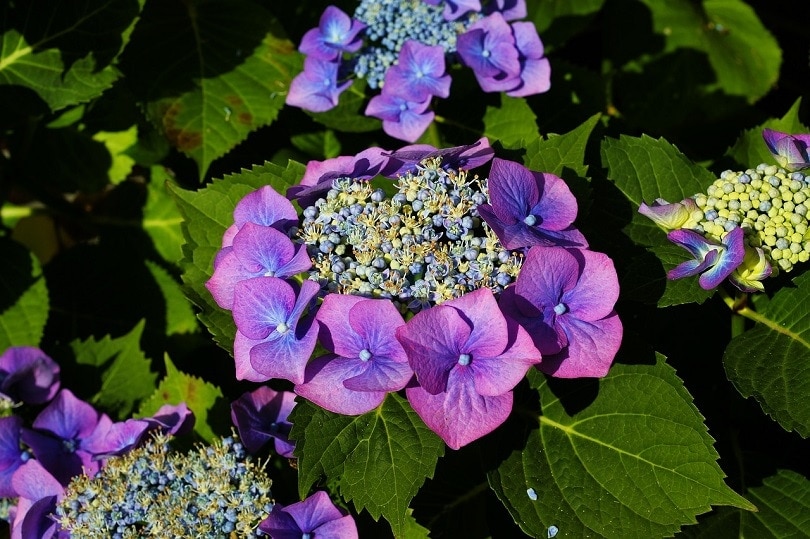
Whether planting in an area for the first time or adding to your existing landscape, hydrangeas are a wonderful choice. Hydrangea plants have a variety of colors, meaning there’s one for everyone to have in their gardens or landscapes.
Here is a step-by-step guide on how and when to plant your hydrangea, information to know, and a few fun facts, too.
Before You Plant a Hydrangea
- Check your hardiness zone. Hydrangeas do well in Zones 6 to 9. Only a few do well in zone four.
- Hydrangeas can be planted in spring or fall. The goal is to give the plant a chance to establish its roots before the extreme hot or cold. Fall is the optimal time to plant this shrub. The best time of day to plant them is early in the morning or late in the afternoon.
- If planting multiple hydrangeas in one area, be sure to give them space to grow. The size will depend on the type of hydrangeas you have purchased. This information should be included with your purchase or can be researched online.
- Be sure to plant your shrub in the appropriate area. Most hydrangeas do well in the early morning sun or partial shade. They should be protected from the hot afternoon sun.
- Plant them in an area that has proper drainage. While hydrangeas love water, they can get root rot.
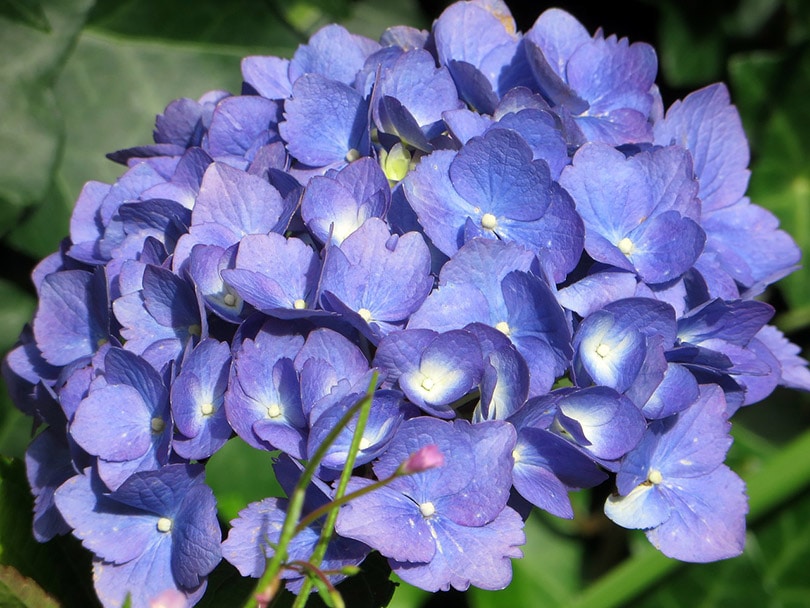
- The bloom time for hydrangeas is from May to July. Some may bloom in August and September, however. It depends on the species and area where you live.
- To ensure that your hydrangea will bloom next year, prune them at the end of each season. Be sure to remove any overgrown and dead branches.
- Hydrangeas are an excellent choice for people that suffer from allergies. They produce a low amount of pollen.
- The pH level in the soil will determine the color of your hydrangeas. If your pH levels vary, your hydrangeas can also vary in color. If you choose, you can change the color of your hydrangea by adjusting the pH levels in your soil.
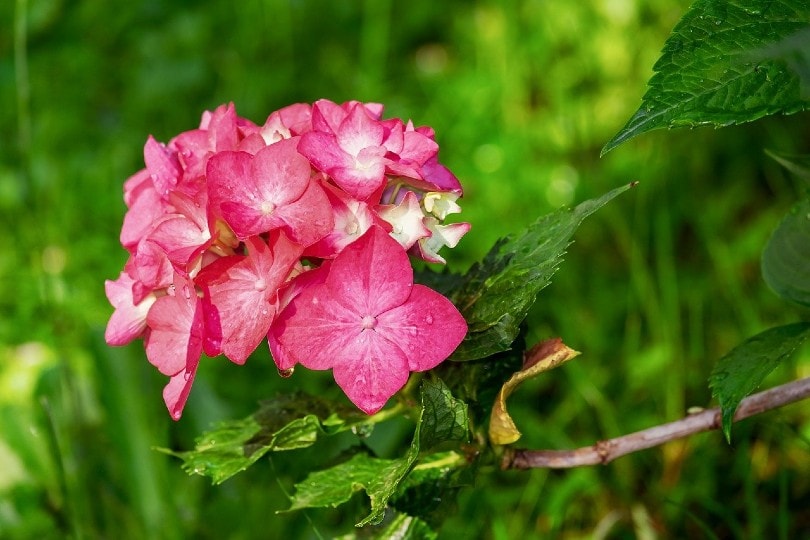
- Pink: Sincerity of emotions, true feelings, romance (pH level over 7)
- White: Purity, grace, vanity (pH level between 6 and 6.2)
- Purple: Royalty, pride, understanding (pH level between 5.5 and 6.5)
- Blue: Gratitude, apology, understanding (pH level below 5.5)
- Hose or watering can
- Digging tool
- Planting soil

The 7 Steps to Planting Hydrangeas
1. Remove the plant from the container.
Carefully loosen the plant from the container. Wrapping your hand around the base of the stems, loosen the pot from around the dirt. Gently guide the plant from the pot.
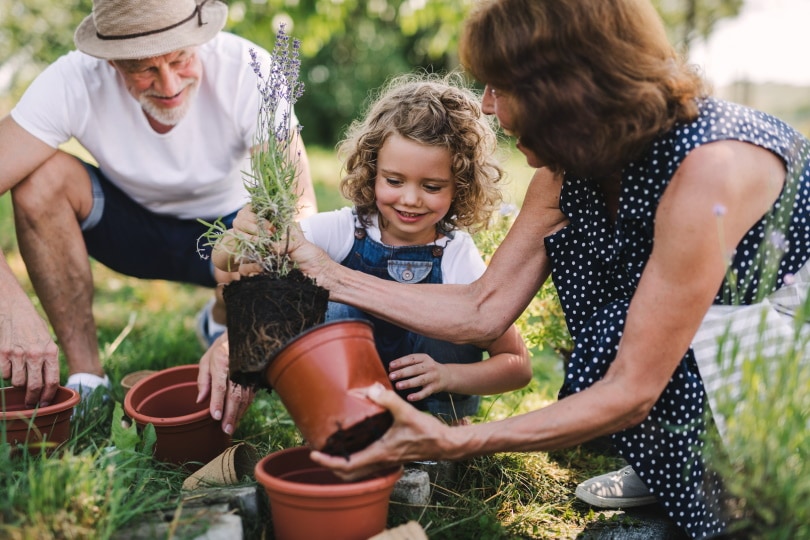
2. Inspect the roots.
Once the plant has been removed from the container, check the root ball for any rotting or dead parts. Snip any parts that appear to be dead or appear to be rotting.
3. Loosen the roots.
If the roots of the plant are tightly bound, gently shake them loose. You can cut a few of the outside roots if necessary. Do not be rough and vigorously shake them. Free the roots by gently rubbing and squeezing the soil. This allows the roots to spread.

4. Dig your hole.
The hole for your shrub should measure two to three times as big or wide as the root ball of the plant. The hole should be deep enough for the stem base of the plant to rest level with the hole.
5. Place the plant in the hole.
Place the plant in the hole and add the dirt a little at a time. The soil should be pressed gently to the sides of the plant. This will give the plant support and remove any air pockets. Stop adding soil at about the halfway mark.

6. Water the plant.
Once the soil and plant are firmly in place, generously water the plant. The water should be left to drain. Allow it to fully absorb into the soil then continue to add soil. Gently press the soil to the sides of the plant until the roots are covered. Only about one inch of the stem or trunk should get covered by the soil.
7. Water frequently.
It is important to generously water newly transplanted hydrangeas. Since the roots are not fully functioning, daily watering for the first few days is recommended.
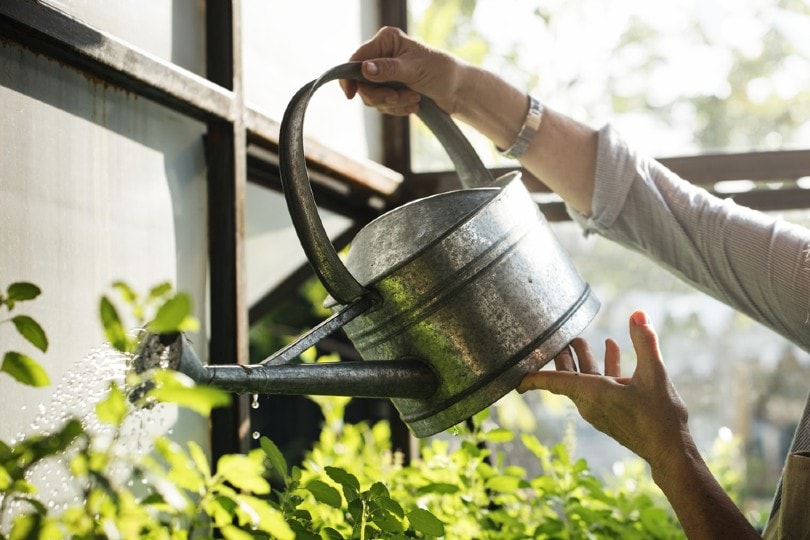
- Related Read: Is My Hydrangea Dead or Dormant?
Fun Facts about Hydrangeas
- Hydrangeas arrived in North America 40 to 65 million years ago.
- Blake Lively had them in her wedding bouquet.
- Madonna hates them.
- Hydrangea Day is January 5th.
- Hydrangeas don’t have petals, they have sepal. Sepals are the green leaves that change colors and protect the bud of the flower.
- The sepals drink water and keep the flowers looking healthy and new.
- Hydrangeas have over 75 species. There are six major ones in North America.
- Certain shapes are called “mopheads” and “lacecaps.”
- Hydrangeas contain small amounts of cyanide, which is poisonous to humans and pets, and should not be ingested.
- The Oakleaf Hydrangea is the state wildflower of Alabama.
- They have been used for healing by Buddhists and Native Americans.
- Hydrangeas do not smell.
-
- Some hydrangeas are wild and grow near streams and rocky areas.
-

Conclusion
Hydrangeas are a beautiful addition to your landscape. You can enjoy its large blooms through summer and possibly in the early fall. The variety of colors and shapes has something for everyone. From containers to gardens, you can plant them to your liking. It’s always a good idea though, to keep them away from your pets.
Featured Image Credit: Kapa65, Pixabay
Contents
